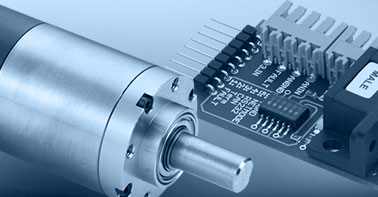- info@ems-ltd.com
- 0118 9817391
Home > PR > Helping keep hay fever at bay
Helping keep hay fever at bay
20/07/2023 - Micromotors help monitor pollen counts
20th July 2023
Filed under:
Ems, Faulhaber

Summer sunshine brings joy to many, but for hay fever sufferers, it isn’t always quite so welcome. Affecting up to 20 per cent of the population, high pollen counts can make it difficult to enjoy time outdoors. In this article, Dave Walsha, sales manager at DC motor supplier EMS, explains how pollen monitoring stations can help keep allergy sufferers informed.
March to September is typically the worst period for hay fever sufferers, with pollen counts at their highest. With no cure or method of prevention for hay fever, sufferers often turn to medication to help manage symptoms, and stay indoors where possible. To help those with allergies alleviate their symptoms, information on local pollen counts is made readily accessible to help people plan.
Analysing the air
Information on the type of pollen present, as well as its concentration, is obtained through specialist equipment. One of the most common approaches is to use the Burkard spore trap.
The spore trap works by using a fan to draw air into the device, and over a slowly rotating drum. Attached to the drum is an adhesive tape, which pollen and spores in the air then stick to. This adhesive strip is then removed for analysis. Each strip is cut into seven pieces, allowing for analysis of each individual day.
There are around 30 different types of pollen that can cause hay fever, but the chemical composition between them tends to have little variation. For this reason, it’s preferable to look at the morphological characteristics to identify the pollen, which trained pollen counters can do using a microscope.
While this approach is sufficient for some environmental studies, it’s not quite so useful for most allergy sufferers. If it takes a week to obtain pollen readings, plus the time taken for the samples to be collected and analysed at the lab, the information may not be as relevant or accurate by the time it comes to be reported. This can affect the quality of pollen forecasting. Furthermore, the manual analysis required by this approach can lead to errors due to its dependency on the experience and day-to-day performance of the scientist.
Turning to automation
To try and speed up the process, efforts to automate the procedure have been developed. Automated pollen monitoring systems can take up to eight samples in a day, with each sample taking several hours to collect. Unlike the traditional Burkard spore trap, these machines can work entirely autonomously for up to six months at a time.
With a much faster sampling and analysis time, the machines can give an almost real-time analysis of pollen in the air, helping to support forecast data and provide up-to-date figures on pollen count.
Automated pollen machines draw in air across sample slides instead of onto tape. Pollen often shrivels due to warm weather conditions, so a layer of gel is applied to the slide to rejuvenate it. Once the defined amount of air has been taken into the machine and sampling is complete, the slides are moved under a microscope for analysis.
The analysis is performed via image recognition software, which uses a large library of reference pollen to identify individual grains. After analysis, the sample is transported into a magazine, which allows for further study and validation of the results to be done by scientists.
It’s important to note that pollen can change in shape and size because of climate changes. Therefore, having a large reference library of images is essential to ensure accurate identification. Luckily, automated pollen monitoring systems can archive images and add them to pollen databases throughout, helping the equipment to get more accurate each time.
Achieving precision imaging
Essential to the automation of these devices is a collection of small DC motors, which provide all the necessary movement within the device. This includes small robotic grippers to move the samples, and micro pumps to apply the gel.
Pollen grains are tiny, typically around 25 µ (microns) in size. Therefore, to accurately capture the morphological structure and characteristics of the pollen, the equipment must work to extreme precision.
Poor images will often result in incorrect results. Furthermore, if the machine is automatically uploading its findings to a larger database, then repeated incorrect results can affect the dataset negatively, leading to even more errors.
The accurate positioning of the samples on the slides, as well as the focusing of the microscope is therefore crucial.
Additional requirements for these motors include a compact, robust design. For better air capture, many of these pollen monitoring systems are in hard-to-reach locations, such as on rooftops. They are also left to operate continuously for long periods at a time, so having highly reliable motors ensures that the system can run smoothly with minimal maintenance.
To find DC motors that fit such a specification, choosing an experienced micromotor supplier is essential. They’ll be able to outline the required torque, power and speed of the motor for the application, and specify micromotors to suit. Choosing a supplier that is also capable of providing custom solutions, like EMS, helps ensure a choice of motors that are designed to fit perfectly.
As pollen counts peak this summer, it’s imperative that allergy sufferers are provided with up-to-date information on the conditions outdoor. Thankfully, with automation, the process of pollen monitoring and identification can be sped up significantly. Rather than being stuck in uncertainty, automation helps allergy sufferers make the most out of each day.
- Categories / Tags
- 1024...SR
- AEMT
- AESL
- Acceleration
- Agriculture
- Agritech
- Autoclave
- BHS
- BHT
- BHx
- BLDC
- BP4
- BRC Series
- BXT
- BeBionic
- Bespoke
- Brushed
- Brushless
- Brushless Motor
- Buhler
- Building Automation
- COVID
- CXR
- Catalogue
- Controller
- Coreless
- Coventry
- Custom
- Custom Design
- DC Motor
- DMN
- Dc Motor
- Design
- Dimatech
- Drones
- EDS
- EMS
- EMS News
- EV
- Encoder
- Ewellix
- Exoskeleton
- Expo
- FAULHABER
- Factory
- Faulhaber
- Flat
- GPT
- Galil
- Gearhead
- IEF3
- Industry 4.0. Blog
- Inspection
- KAG
- LL06
- LM
- Laboratory Automation
- Linear
- Linear Actuator
- M50
- M80
- MC3
- Manufacturing
- Mechatronics
- MedTech
- Medical
- Medical Devices
- Medical Imaging
- Medtech
- Merkel
- Motion Control
- Motor
- New
- Nidec
- Nidec Servo
- Optical
- Piezo
- Piezomotor
- Pipeline
- Planetary
- Point Of Care
- Precision
- Precistep
- Process
- Production
- Quickshaft
- Robot
- Robotics
- Robots
- SKF
- SR Series
- Samples
- Software
- Space
- Sponsorship
- Stepper
- TMS
- Testing
- Trade Show
- 1016
- 1660
- 1935
- 2017
- 2018
- 2020
- 2021



